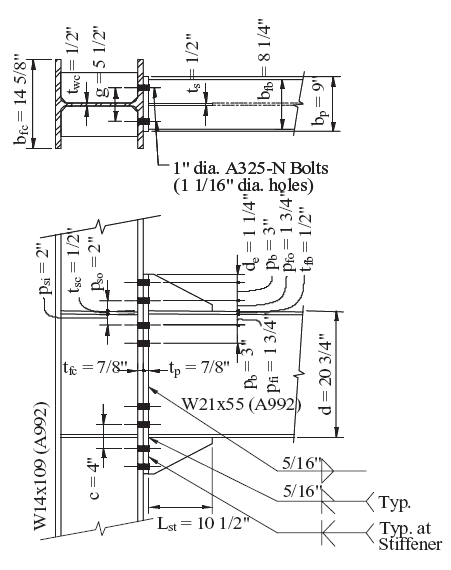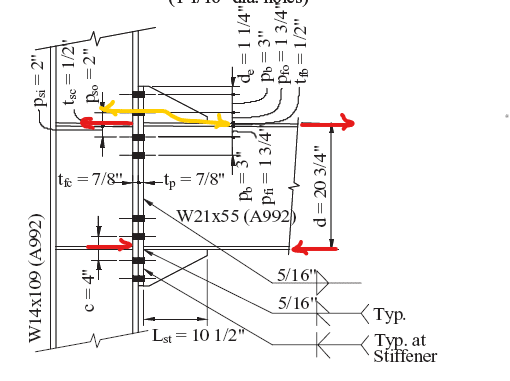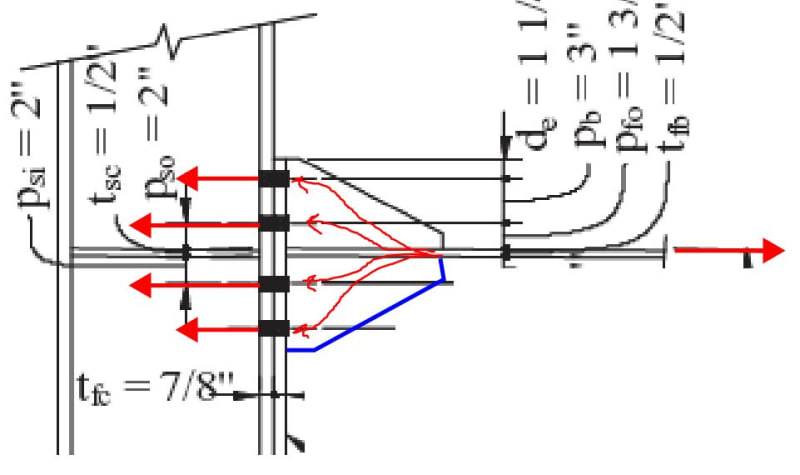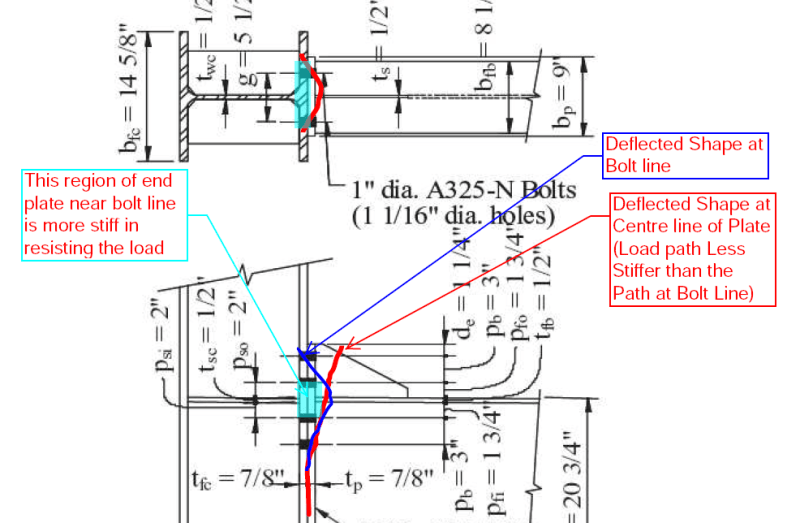Blackstar123
Civil/Environmental
Follow up question from thread507-220851
Situation describe in referenced thread is somewhat similar to at AISC design example 8ES. Contrary to believed opinion of most contributors, lever arm consider in this example to determine the couple force is d-tf, even though the end plate stiffener is sized to prevent local buckling. I came looking for answer here because I am of the same opinion that lever arm should at least be considered from beam compressive flange to the centroid of the tension stiffener. However, code document suggest otherwise. In this kind of contradictory situation would you follow the code example or your own understanding?


Situation describe in referenced thread is somewhat similar to at AISC design example 8ES. Contrary to believed opinion of most contributors, lever arm consider in this example to determine the couple force is d-tf, even though the end plate stiffener is sized to prevent local buckling. I came looking for answer here because I am of the same opinion that lever arm should at least be considered from beam compressive flange to the centroid of the tension stiffener. However, code document suggest otherwise. In this kind of contradictory situation would you follow the code example or your own understanding?





